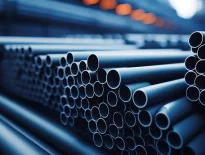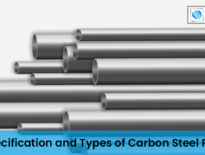Stainless steel pipes and carbon steel pipes are both excellent choices for various applications, making it challenging to decide which one is the best fit. By understanding the basics of steel pipes and their uses, you can better determine which type suits your needs.
What Are Carbon Steel Pipes Used For?
Carbon steel pipes are made from steel ingots or solid round steel, which are then formed into capillary tubes through perforation and further processed by hot rolling, cold rolling, or cold drawing. They play a crucial role in the steel pipe industry and are used for liquid, gas, and steam services, both above and below ground. Although they are not recommended for corrosive services, they can be used in caustic services.

| Carbon Steel Pipe Types |
| Hot-rolled carbon steel pipes: General steel pipes, low and medium pressure boiler steel pipes, high-pressure boiler steel pipes, alloy steel pipes, stainless steel pipes, petroleum cracking pipes, geological steel pipes, and others. |
| Cold-rolled carbon steel pipes: Carbon thin-walled steel pipes, alloy thin-walled steel pipes, stainless thin-walled steel pipes, special-shaped steel pipes, in addition to general steel pipes, low and medium pressure boiler steel pipes, high-pressure boiler steel pipes, alloy steel pipes, stainless steel pipes, and petroleum cracking pipes. |
What Are Stainless Steel Pipes Used For?
Stainless steel pipes are made from acid-resistant and heat-resistant steel billets, which are heated, pierced, sized, hot-rolled, and cut.
Stainless steel pipes, primarily used in piping systems for fluid or gas transport, find applications in various industries such as petroleum, chemical, medical, food, light industry, machinery, instrumentation, as well as for mechanical structural parts. Their lighter weight, equivalent bending and torsion strength, make them widely used in mechanical parts, engineering structures, furniture, and kitchen utensils.

| Stainless Steel Pipe Types |
| Classified by process: Stainless steel seamless steel pipe and stainless steel welded steel pipe (seam steel pipe). |
| Classified by the shape of the outer diameter: Round pipes and special-shaped pipes, including square, rectangular, semi-circular, hexagonal, equilateral triangle, octagonal, and other special-shaped steel pipes. |
Carbon Steel Pipes vs Stainless Steel Pipes
Common carbon steel pipes include Q195 and Q235, while stainless steel pipes contain additional elements like chromium, nickel, and copper. The chromium content in stainless steel pipes forms a protective film (passivation film) on the surface, providing anti-corrosion properties. The primary difference between the two lies in their corrosion resistance—carbon steel pipes are prone to rusting, while stainless steel pipes offer corrosion-resistant properties.
Stainless steel pipes have a lustrous finish and come in various grades that can increase the chromium content until the steel finish is as reflective as a mirror. In contrast, carbon steel pipes have a dull, matte finish similar to cast iron or wrought iron fencing.
Stainless steel, unlike carbon steel, doesn’t corrode easily, thanks to the chromium acting as a hardening agent. While carbon steel pipes react with oxygen in the air to form an iron oxide layer, stainless steel pipes form a protective chromium oxide layer. For this reason, stainless steel pipes are suitable for applications requiring high levels of hygiene, such as in the food and brewing industries.
How To Choose Steel Pipes For Your Pipeline?
Several factors affect the selection of carbon steel pipes or stainless steel pipes:
- Substance: Consider what your pipeline will transport. If you’re transporting corrosive items such as chemicals or saltwater, stainless steel pipes are a better choice.
- Temperature: Will your pipes be exposed to extreme temperatures? Carbon steel pipes are known for their ability to withstand high heat and are suitable for steam pipes. However, for extreme cold conditions, such as transporting cryogenic liquids, a different grade of pipe may be necessary.
- Cost: Both stainless steel pipes and carbon steel pipes are cost-effective options. While carbon steel pipes are generally less expensive, the cost of stainless steel pipes increases with higher chromium content.
- Appearance: If appearance is a consideration, stainless steel pipes have a shine and resist corrosion, making them suitable for visible applications. Carbon steel pipes have a matte finish and may corrode over time if exposed.
At Solitaire Overseas, we supply high-quality stainless steel pipes and carbon steel pipes. Contact us for a quote if you’re interested in our products.
Conclusion
Here, at Solitaire Overseas Steel Pipe we supply and export the best quality stainless steel pipes and carbon steel pipes. We are one of the leading stainless and carbon steel pipe suppliers from Mumbai, India. If you are interested in Solitaire Overseas steel pipes, please do not hesitate to contact us for a quote.


